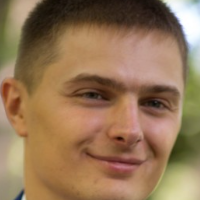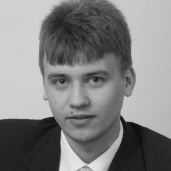International Journal of Intelligent Systems and Applications (IJISA)
IJISA Vol. 9, No. 6, 8 Jun. 2017
Cover page and Table of Contents: PDF (size: 565KB)
Fuzzy Clustering Data Arrays with Omitted Observations
Full Text (PDF, 565KB), PP.24-32
Views: 0 Downloads: 0
Author(s)
Index Terms
Computational Intelligence, Machine Learning, missing values, gaps' recovery, adaptive system, fuzzy clustering
Abstract
An adaptive neural system which solves a problem of clustering data with missing values in an online mode with a permanent correction of restorable table elements and clusters’ centroids is proposed in this article. The introduced neural system is characterized by both a high speed and a simple numerical implementation. It can process information in a real-time mode.
Cite This Paper
Zhengbing Hu, Yevgeniy V. Bodyanskiy, Oleksii K. Tyshchenko, Vitalii M. Tkachov,"Fuzzy Clustering Data Arrays with Omitted Observations", International Journal of Intelligent Systems and Applications(IJISA), Vol.9, No.6, pp.24-32, 2017. DOI:10.5815/ijisa.2017.06.03
Reference
[1]A.K. Jain and R.C. Dubes, Algorithms for Clustering Data. Englewood Cliffs, N.J.: Prentice Hall, 1988.
[2]L. Kaufman and P.J. Rousseeuw, Finding Groups in Data: An Introduction to Cluster Analysis. N.Y.: John Wiley & Sons, Inc., 1990.
[3]J. Han and M. Kamber, Data Mining: Concepts and Techniques. San Francisco: Morgan Kaufmann, 2006.
[4]G. Gan, C. Ma, and J. Wu. Data Clustering: Theory, Algorithms, and Applications. Philadelphia: SIAM, 2007.
[5]J. Abonyi and B. Feil, Cluster Analysis for Data Mining and System Identification. Basel: Birkhäuser, 2007.
[6]D.L. Olson and D. Dursun, Advanced Data Mining Techniques. Berlin: Springer, 2008.
[7]C.C. Aggarwal and C.K. Reddy, Data Clustering: Algorithms and Applications. Boca Raton: CRC Press, 2014.
[8]R. Xu and D.C. Wunsch, Clustering. Hoboken, NJ: John Wiley & Sons, Inc. 2009.
[9]F. Hoeppner, F. Klawonn, R. Kruse, T. Runkler, Fuzzy Clustering Analysis: Methods for Classification, Data Analysis and Image Recognition. Chichester: John Wiley & Sons, 1999.
[10]Ye. Bodyanskiy, O. Tyshchenko, and D. Kopaliani, “An evolving neuro-fuzzy system for online fuzzy clustering”, Proc. Xth Int. Scientific and Technical Conf. “Computer Sciences and Information Technologies (CSIT’2015)”, pp.158-161, 2015. DOI: 10.1109/STC-CSIT.2015.7325456.
[11]Zh. Hu, Ye.V. Bodyanskiy, O.K. Tyshchenko, and V.O. Samitova,"Fuzzy Clustering Data Given in the Ordinal Scale", International Journal of Intelligent Systems and Applications (IJISA), Vol.9, No.1, pp.67-74, 2017. DOI: 10.5815/ijisa.2017.01.07.
[12]Zh. Hu, Ye.V. Bodyanskiy, O.K. Tyshchenko, and V.O. Samitova,"Fuzzy Clustering Data Given on the Ordinal Scale Based on Membership and Likelihood Functions Sharing", International Journal of Intelligent Systems and Applications (IJISA), Vol.9, No.2, pp.1-9, 2017. DOI: 10.5815/ijisa.2017.02.01.
[13]Zh. Hu, Ye.V. Bodyanskiy, O.K. Tyshchenko, V.O. Samitova,"Possibilistic Fuzzy Clustering for Categorical Data Arrays Based on Frequency Prototypes and Dissimilarity Measures", International Journal of Intelligent Systems and Applications (IJISA), Vol.9, No.5, pp.55-61, 2017. DOI: 10.5815/ijisa.2017.05.07.
[14]Zh. Hu, Ye.V. Bodyanskiy, and O.K. Tyshchenko, “A Cascade Deep Neuro-Fuzzy System for High-Dimensional Online Possibilistic Fuzzy Clustering”, Proc. of the XI-th International Scientific and Technical Conference “Computer Science and Information Technologies” (CSIT 2016), pp.119-122, 2016. DOI: 10.1109/STC-CSIT.2016.7589884.
[15]Zh. Hu, Ye.V. Bodyanskiy, and O.K. Tyshchenko, “A Deep Cascade Neuro-Fuzzy System for High-Dimensional Online Fuzzy Clustering”, Proc. of the 2016 IEEE First Int. Conf. on Data Stream Mining & Processing (DSMP), pp.318-322, 2016. DOI: 10.1109/DSMP.2016.7583567.
[16]Ye. Bodyanskiy, O. Tyshchenko, and D. Kopaliani, “An Evolving Cascade Neuro-Fuzzy System for Data Stream Fuzzy Clustering”, in International Journal of Computer Science and Mobile Computing (IJCSMC), 2015, vol. 4(9), pp.270-275.
[17]Zh. Hu, Ye. Bodyanskiy, O. Tyshchenko, and O. Boiko, “An Ensemble of Adaptive Neuro-Fuzzy Kohonen Networks for Online Data Stream Fuzzy Clustering”, in I.J. Modern Education and Computer Science (IJMECS), 2016, vol. 8(5), pp.12-18.
[18]K.-L. Du and M.N.S. Swamy, Neural Networks and Statistical Learning. London: Springer- Verlag, 2014.
[19]T. Hastie, R. Tibshirani, and J. Friedman, The Elements of Statistical Learning. Data Mining, Inference, and Prediction. N.Y.: Springer Science & Business Media, LLC, 2009.
[20]C.C. Aggarwal, Data Mining. Cham: Springer, Int. Publ. Switzerland, 2015.
[21]T. Marwala, Computational Intelligence for Missing Data Imputation, Estimation, and Management: Knowledge Optimization Techniques. Hershey-New York: Information Science Reference, 2009.
[22]A.N. Gorban, A.A. Rossiev, D.C. Wunsch, “Neural network modeling of data with gaps”, Radioelectronics Informatics. Control, 2000, No.1 (3), pp. 47-55.
[23]M. Tkacz, “Artificial neural networks in incomplete data sets processing”, Intelligent Information Processing and Web Mining, 2005, pp.577-583.
[24]R. Kruse, C. Borgelt, F. Klawonn, C. Moewes, M. Steinbrecher, and P. Held, Computational Intelligence. A Methodological Introduction. Berlin: Springer-Verlag, 2013.
[25]Ye. Bodyanskiy, “Computational intelligence techniques for data analysis”, in Lecture Notes in Informatics, 2005, P-72, pp.15–36.
[26]Ye. Bodyanskiy, A. Dolotov, “Image processing using self-learning fuzzy spiking neural network in the presence of overlapping classes”, Proc. of the 11th Biennial Baltic Electronics Conf. (BEC 2008), pp.213-216, 2008. DOI: 10.1109/BEC.2008.4657517.
[27]J-S.R. Jang, C.T. Sun and E. Mizutani, Neuro-Fuzzy and Soft Computing: A Computational Approach to Learning and Machine Intelligence, New Jersey: Prentice Hall, 1997.
[28]Ye. Bodyanskiy, O. Tyshchenko, and D. Kopaliani, “A hybrid cascade neural network with an optimized pool in each cascade”, Soft Computing (Soft Comput), Vol.19, No.12, pp.3445-3454, 2015. DOI: 10.1007/s00500-014-1344-3.
[29]Ye. Bodyanskiy, O. Tyshchenko, and D. Kopaliani, “Adaptive learning of an evolving cascade neo-fuzzy system in data stream mining tasks”, Evolving Systems, Vol.7, No.2, pp.107-116, 2016. DOI: 10.1007/s12530-016-9149-5.
[30]Zh. Hu, Ye.V. Bodyanskiy, O.K. Tyshchenko, and O.O. Boiko, “An Evolving Cascade System Based on a Set of Neo-Fuzzy Nodes”, International Journal of Intelligent Systems and Applications (IJISA), Vol. 8(9), pp.1-7, 2016. DOI: 10.5815/ijisa.2016.09.01.
[31]D. Graupe, Principles of Artificial Neural Networks (Advanced Series in Circuits and Systems). Singapore: World Scientific Publishing Co. Pte. Ltd., 2007.
[32]K. Suzuki, Artificial Neural Networks: Architectures and Applications. NY: InTech, 2013.
[33]S. Haykin, Neural Networks and Learning Machines (3rd Edition). NJ: Prentice Hall, 2009.
[34]S. Haykin, Neural networks: a comprehensive foundation. Upper Saddle River, N.J.: Prentice Hall, 2008.
[35]A. Gorban, B. Kegl, B. Wunsch, and A. Zinovyev, Principal Manifolds for Data Visualization and Dimension Reduction. Berlin-Heidelberg-New York: Springer, 2007.
[36]C.M. Bishop, Neural Networks for Pattern Recognition. Oxford: Clarendon Press, 1995.
[37]A. Albert, Regression, pseudo-inversion and recurrent estimation. Moscow: Nauka, 1977.
[38]Ye. Bodyanskiy, I.P. Pliss, T.V. Solovyova, “Multistep optimal predictors of multidimensional nonstationary stochastic processes”, Doklady AN USSR, 1986, No.12, pp.47-49. (in Russian)
[39]Ye. Bodyanskiy, V. Kolodyazhniy, and A. Stephan, “An adaptive learning algorithm for a neuro-fuzzy network”, Computational Intelligence. Theory and Applications, 2001, pp.68-75.
[40]T. Yamakawa, E. Uchino, T. Miki and H. Kusanagi, “A neo fuzzy neuron and its applications to system identification and prediction of the system behavior”, Proc. 2nd Int. Conf. on Fuzzy Logic and Neural Networks, pp. 477-483, 1992.
[41]E. Uchino and T. Yamakawa, “Soft computing based signal prediction, restoration and filtering”, Intelligent Hybrid Systems: Fuzzy Logic, Neural Networks and Genetic Algorithms, Boston: Kluwer Academic Publisher, pp. 331-349, 1997.
[42]T. Miki and T. Yamakawa, “Analog implementation of neo-fuzzy neuron and its on-board learning”, Computational Intelligence and Applications, Piraeus: WSES Press, pp. 144-149, 1999.
[43]Ye. Bodyanskiy, O. Tyshchenko, and D. Kopaliani, “An Extended Neo-Fuzzy Neuron and its Adaptive Learning Algorithm”, I.J. Intelligent Systems and Applications (IJISA), Vol.7(2), pp.21-26, 2015.



